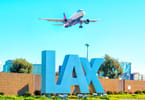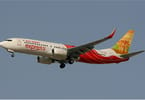(eTN) – Airlines flying into Jomo Kenyatta International Airport (JKIA) yesterday afternoon were faced with a “Sorry, no fuel” announcement, after a problem in the pipeline and hydrants of the airport prevented JetA1 fuel from being discharged.
Among the hundreds of affected passengers was the Kenya Athletics Team, headed for the World Championship in Moscow, left to rue why they did not leave earlier to allow for more time to acclimatize, only to be stuck in a hotel in Nairobi for the night as the crew, unable to refuel the aircraft for their flight, ran out of maximum duty hours.
Blame was reportedly traded between the Kenya Pipeline Company and the Kenya Airports Authority (KAA), with the latter apparently refusing to issue public statements, unlike when they raided the duty free shops a few days ago, during which property worth tens of millions of Kenya Shillings was destroyed, when they were busy to trumpet their “We followed the law, we are innocent, we evicted a tenant whose lease expired” in spite of evidence to the contrary that they had been handed an injunction to prevent the raid.
Airline sources suggested it was the airport fuel installations and pumps which failed, nothing to do with the pipeline company which only delivers their products to the main storage tanks from where the daily fuel requirements are then met through the underfloor fuel distribution system to the parking positions.
“This is another failure we lay at the door step of KAA and their incompetent management. They are an embarrassment to the industry. That organization needs an overhaul at the top right to the middle ranks. Remember the exploding boiler, the fire at the newly-renovated VIP lounge in Mombasa, the light failures in Mombasa and Nairobi? All KAA handiwork. JKIA is East Africa’s most important airport, and it needs professional management not the sort of output you get from political appointees.”
A tourism stakeholder, not surprising also on condition of anonymity, commented angrily: “We are trying to get Kenya’s tourism industry back on track. Such mishaps sadly happen, but it is the way they are handled. KAA is not good in thinking on their feet. Information came late for passengers who proceeded to the airport – checked in, cleared immigration, and then were told no flight because of a problem with fuel. That is upsetting. Such cases should be handled more sensitively. Airlines and their passengers should have received that information before leaving their homes or hotels. They will leave Kenya with the feeling they got messed up. By tomorrow it may be back to normal but the fallout will be felt by the airlines for days to come. KAA needs to shape up really; the delays in Terminal 4 and getting a second runway sooner is affecting tourism growth.”
From other information sourced from Nairobi and airports in neighboring countries it appears that a number of incoming flights were diverted to pick fuel from Entebbe until the situation returned to normal many hours later in Nairobi.
WHAT TO TAKE AWAY FROM THIS ARTICLE:
- Blame was reportedly traded between the Kenya Pipeline Company and the Kenya Airports Authority (KAA), with the latter apparently refusing to issue public statements, unlike when they raided the duty free shops a few days ago, during which property worth tens of millions of Kenya Shillings was destroyed, when they were busy to trumpet their “We followed the law, we are innocent, we evicted a tenant whose lease expired” in spite of evidence to the contrary that they had been handed an injunction to prevent the raid.
- Among the hundreds of affected passengers was the Kenya Athletics Team, headed for the World Championship in Moscow, left to rue why they did not leave earlier to allow for more time to acclimatize, only to be stuck in a hotel in Nairobi for the night as the crew, unable to refuel the aircraft for their flight, ran out of maximum duty hours.
- Airline sources suggested it was the airport fuel installations and pumps which failed, nothing to do with the pipeline company which only delivers their products to the main storage tanks from where the daily fuel requirements are then met through the underfloor fuel distribution system to the parking positions.




















![China's Hyperloop Train: A Glimpse into the Future of Transportation 18 Travel Tourism News | Domestic & International Hyperloop Train China [Photo: Hyperloop Transportation Technologies]](/cdn-cgi/image/width=145,height=100,fit=crop,quality=80,format=auto,onerror=redirect,metadata=none/wp-content/uploads/2024/02/180720163348-hyperlooptt-china-capsule.jpg)

